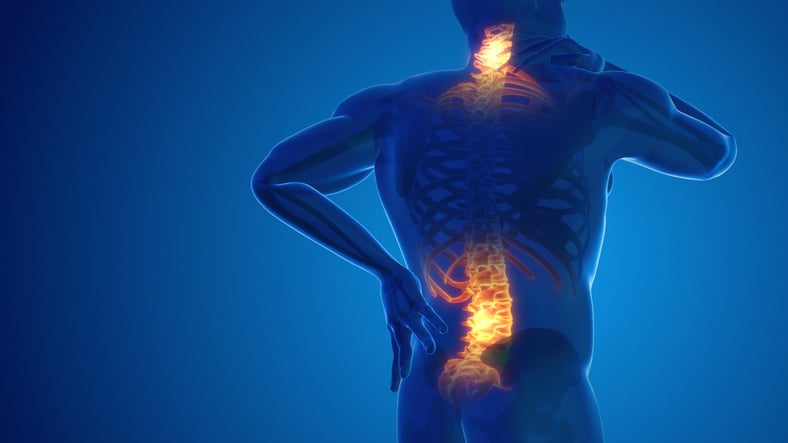Request Demo
Last update 08 May 2025
CRMP2 x Nav1.7
Last update 08 May 2025
Related
1
Drugs associated with CRMP2 x Nav1.7Target |
Mechanism CRMP2 modulators [+1] |
Active Org.- |
Originator Org. |
Active Indication- |
Inactive Indication |
Drug Highest PhasePending |
First Approval Ctry. / Loc.- |
First Approval Date20 Jan 1800 |
100 Clinical Results associated with CRMP2 x Nav1.7
Login to view more data
100 Translational Medicine associated with CRMP2 x Nav1.7
Login to view more data
0 Patents (Medical) associated with CRMP2 x Nav1.7
Login to view more data
24
Literatures (Medical) associated with CRMP2 x Nav1.701 Jan 2025·Pain
Small molecule targeting NaV1.7 via inhibition of CRMP2-Ubc9 interaction reduces pain-related outcomes in a rodent osteoarthritic model
Article
Author: Loya-López, Santiago ; Gomez, Kimberly ; Hestehave, Sara ; Allen, Heather N. ; Duran, Paz ; Calderon-Rivera, Aida ; Khanna, Rajesh ; Rodríguez-Palma, Erick J.
01 Jul 2024·Biochemical and Biophysical Research Communications
Inhibiting Nav1.7 channels in pulpitis: An in vivo study on neuronal hyperexcitability
Article
Author: Lee, Kyung Hee ; Cha, Myeounghoon ; Kim, Un Jeng ; Lee, Bae Hwan
20 Oct 2023·Pain
Targeted transcriptional upregulation of SENP1 by CRISPR activation enhances deSUMOylation pathways to elicit antinociception in the spinal nerve ligation model of neuropathic pain
Article
Author: Tang, Cheng ; Duran, Paz ; Loya-Lopez, Santiago ; Perez-Miller, Samantha ; Nelson, Tyler S. ; Allen, Heather N. ; Moutal, Aubin ; Calderon-Rivera, Aida ; Khanna, Rajesh ; Gomez, Kimberly
1
News (Medical) associated with CRMP2 x Nav1.731 Jul 2023
The gene therapy indirectly targets the sodium ion channel NaV1.7, long-established to be a driver of pain in humans.
Researchers have identified another potential gene therapy for treating chronic pain, this time by indirectly targeting a key sodium ion channel.
In a study published July 27 in Proceedings of the National Academy of Sciences, researchers from New York University (NYU) described how they developed a gene therapy that relieved chronic neuropathic pain in mice by regulating a previously uncharacterized part of the sodium ion channel NaV1.7. The treatment was also effective against chemotherapy-induced peripheral neuropathy, a type of pain experienced by some cancer patients who undergo chemo.
“Our study represents a major step forward in understanding the underlying biology of the NaV1.7 sodium ion channel, which can be harnessed to provide relief from chronic pain,” Rajesh Khanna, Ph.D., the study's senior author and director of the NYU Pain Research Center, said in a press release.
Scientists have known since 2006 that the NaV1.7 sodium ion channel—found on the ends of pain-sensing nerve cells—is key to experiencing pain. But the pharma industry’s attempts to drug it directly with small molecules have failed.
Khanna’s former lab at the University of Arizona previously developed its own small molecule against NaV1.7, dubbed 194. The drug worked differently from its predecessors; rather than directly inhibiting NaV1.7, it inhibited a protein called CRMP2, which regulates the sodium ion channel’s activity. After finding that 194 was effective in controlling chronic neuropathic pain in mice, the researchers licensed it out for development by Khanna’s startup, Regulonix.
But Khanna still wondered why regulation by CRMP2 was specific to NaV1.7 and not to one of the other seven sodium ion channels of the same family. His lab at NYU addressed that question as part of their new study. Using a technique called peptide mapping, they discovered a unique binding domain for CRMP2 in NaV1.7 that wasn’t present in other sodium ion channels. They also found that if they removed the binding domain, CRMP2 could no longer regulate NaV1.7.
Armed with this discovery, the researchers set out to see whether they could leverage it to relieve pain for the long run. They created an AAV9 viral vector that encoded a genetic sequence that would inhibit CRMP2, then injected it into male and female mice that already had sciatic nerve injury. The treatment appeared to reverse pain in the mice for the duration of the 30-day study period, compared to no pain relief in mice that received a control virus.
Next, the researchers tested whether the treatment could prevent chronic pain. In this case, they injected male and female mice with the gene therapy before performing spared nerve injury surgery, a technique used to induce sciatic nerve injury. None of the mice that received the therapy showed symptoms of pain following recovery, while the mice in the control group did.
“Collectively, these findings reveal that the [CRMP2 binding domain] can be targeted to prevent the initiation and maintenance of chronic neuropathic pain in both male and female mice,” the scientists wrote in their paper. “Therefore, the [treatment] could be used as a genetic therapy to provide long-lasting pain relief.”
In their next set of experiments, the researchers investigated whether the therapy could be used to treat chemotherapy-induced peripheral neuropathy. They injected male and female mice with a chemo drug called paclitaxel, most commonly known as Taxol, and assessed their pain responses seven days later. On Day 8 following the treatment, they also tested whether the animals were hypersensitive to cold, another symptom of chemotherapy-induced peripheral neuropathy.
After confirming that the mice had developed both heightened pain and hypersensitivity to cold, the researchers injected one group of them with the treatment and another with a control virus. Fourteen, 16 or 21 days after treatment, they assessed the mice's pain responses again; on Days 15, 17 and 22, they tested their cold sensitivity.
By Days 16 and 21, the treatment had reversed pain levels in the mice. It worked even sooner on cold hypersensitivity, which dropped by Day 15. The researchers noted that in both the studies on sciatic nerve injury and chemotherapy-induced peripheral neuropathy, motor function remained intact, with no signs of off-target effects.
Going a step further, the researchers studied the gene therapy’s effects on spinal cord neurons from macaque monkeys, which are genetically similar to the same type of cell in humans. Their findings showed that the treatment reduced NaV1.7 function, suggesting it might work against pain in nonhuman primates—and perhaps in humans—as well.
The study has some limitations. For one, CRMP2 may not be the only protein that interacts with the newly identified receptor binding domain, the researchers pointed out. Furthermore, they know that other proteins do get involved when CRMP2’s interaction with NaV1.7 is inhibited; exactly what those proteins are and how they exert their effects remains unknown. And, of course, mice aren’t men—indeed, studies have shown that the NaV1.7-mediated pain responses in the two species aren’t exactly the same.
Finally, there are drawbacks to gene therapy, the scientists noted. Some reports have suggested the possibility of sensory neuron toxicity from AAV9 vectors like the one used in the study. Long-term NaV1.7 suppression might have deleterious side effects that weren’t apparent in the new study, they wrote.
Still, the team said they “expect that the targeting of the [CRMP2 binding] domain can be used as a viable strategy for developing future therapeutics that are highly specific and safe for treating chronic pain.” The long-term goal is to take the gene therapy to the clinic, Khanna said in the press release.
The findings are the latest to validate gene therapy as a potential solution for chronic pain. In 2021, a team from startup Navega, a spinout from the University of California, San Diego, reported that it had successfully used CRISPR and zinc fingers—both gene editing techniques—to completely suppress the gene that encodes NaV1.7 in mice. Before it shuttered in March, Coda Biotherapeutics was developing an approach that involved shutting down neuronal pain circuits by combining gene therapy with an oral small-molecule agonist.

Gene Therapy
Analysis
Perform a panoramic analysis of this field.
login
or

AI Agents Built for Biopharma Breakthroughs
Accelerate discovery. Empower decisions. Transform outcomes.
Get started for free today!
Accelerate Strategic R&D decision making with Synapse, PatSnap’s AI-powered Connected Innovation Intelligence Platform Built for Life Sciences Professionals.
Start your data trial now!
Synapse data is also accessible to external entities via APIs or data packages. Empower better decisions with the latest in pharmaceutical intelligence.
Bio
Bio Sequences Search & Analysis
Sign up for free
Chemical
Chemical Structures Search & Analysis
Sign up for free
